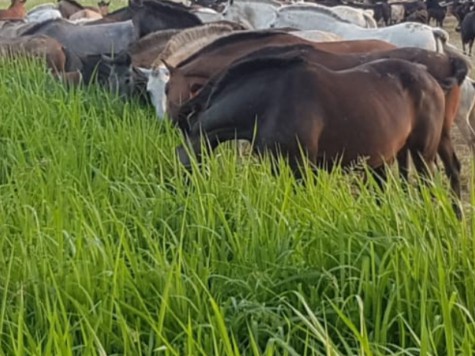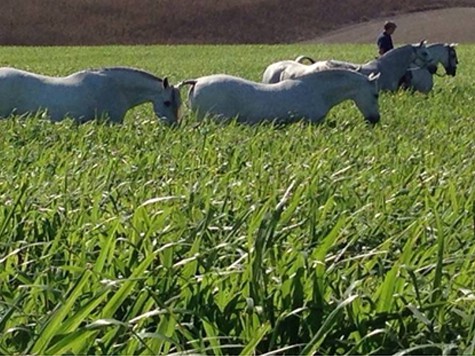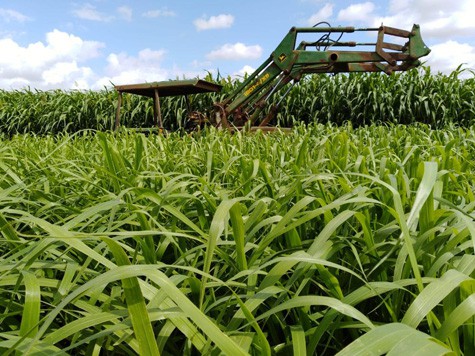Siambasa Grass
Panicum Maximum
Siambasa® Grass It belongs to the grass family, more specifically to the Panicum Maximum species, with which we achieve an excellent relationship between production and quality . It is an excellent alternative both in the agricultural and livestock sectors given that it combines a great forage yield with excellent nutritional quality , reaching high protein values and excellent percentages of fiber, energy and digestibility.
Another fact to take into account is its easy handling since we can pack during times of high temperatures without losing quality due to leaf fall. Siambasa grass is a crop that is 80% leafy in its composition, it can be used for hay, silage or direct grazing.
Pasto Siambasa the fodder of champions.
Characteristics
- High forage yields
- Very rustic plant
- Salinity tolerance
- Resistance to pests and diseases
- Excellent stem-to-leaf ratio up to 80% leaves
- In vitro digestibility up to 80%
- Protein content of 14% – 16%
- Use for hay, silo and grazing






Sheet
Scientific name of the species
Panicum Maximun Mombasa
Common name of the species
Siambasa Grass
Vegetative cycle
According to production areas (annual or multiannual up to 6 years)
Growth
Erect and godson
Height
1.2 - 1.6 mt
Growing season
Warm season
Dissemination
Seeds
Soils
Deep, well drained. Sandy franc, frank and loamy loam
Drought tolerance
Loud
Frost tolerance
Casualty
Salinity tolerance
Loud
Tolerance to waterlogging
Does not tolerate
Total dry matter production/ha
18,000 - 24,000 kg of Dry Matter /ha
Palatability
Excellent
Toxicity
Does not possess
Planting season
Since the beginning of the warm season
Planting density
10 kg/ha
Depth of planting
1 cm
Remarks
Forage production
Implantation of Pasto Siambasa
Preparation of the land
Sowing and establishment
- It is important to always cover all the seeds in the sowing, to avoid that they when they are on the surface of the soil do not dehydrate depending on the high temperatures. Use of the compactor roller that improves the quality of the sowing according to the uniform acceleration of the germination of the seeds.
- For excessively sandy soils we recommend the use of the compactor roller before and after planting.
Weed control
For the control of broadleaf we will use in post emergency we will use a combination of two herbicides in a single treatment from 30 days of crops, in case of much premature invasion of weeds the treatment can be advanced from 3 leaves. The active substances would be:
Fluroxipir + sulfonylureas (tribenuron methyl, tifensulfuron methyl, etc.)
Fertilization
Irrigation
Handling
Videos

Contact us
- Responsible: Efecto Soluciones S.L.
- Purpose of the collection and processing of personal data: to manage the request you make in this contact form.
- Rights: You can exercise your rights of access, rectification, limitation and deletion of the data in info@efectosoluciones.com, as well as the right to file a claim with a control authority.
- Additional information: In the privacy policy you will find additional information about the collection and use of your personal information. Including information on access, preservation, rectification, deletion, security and other topics.





